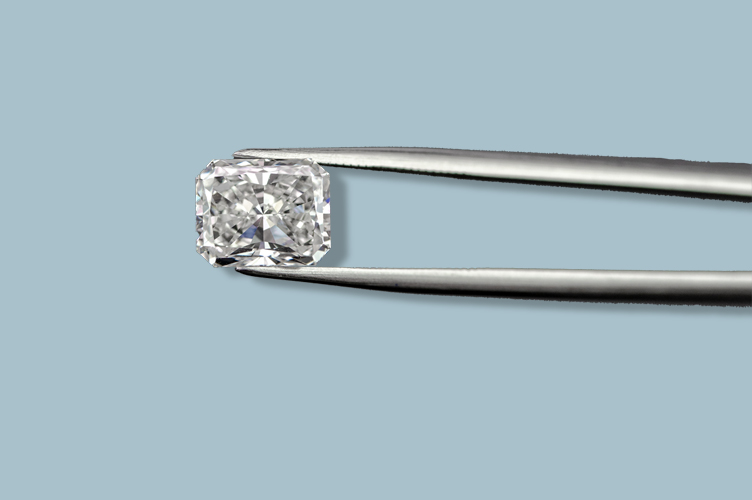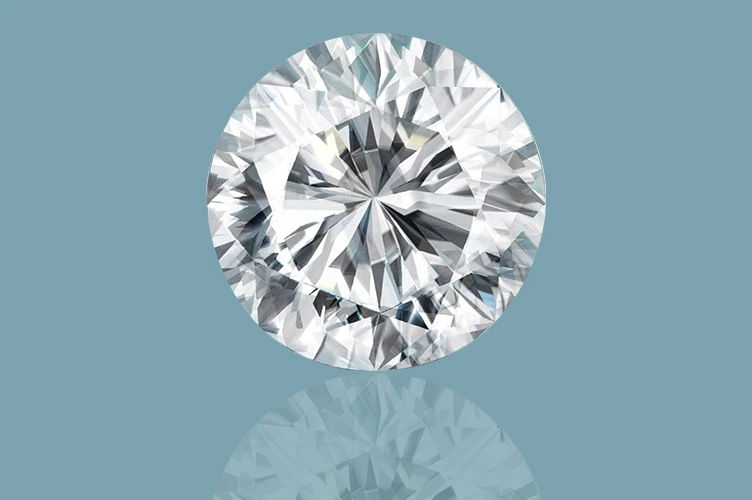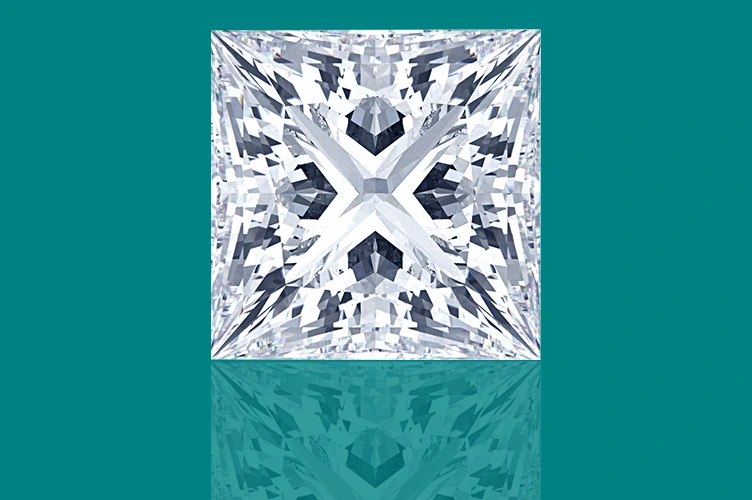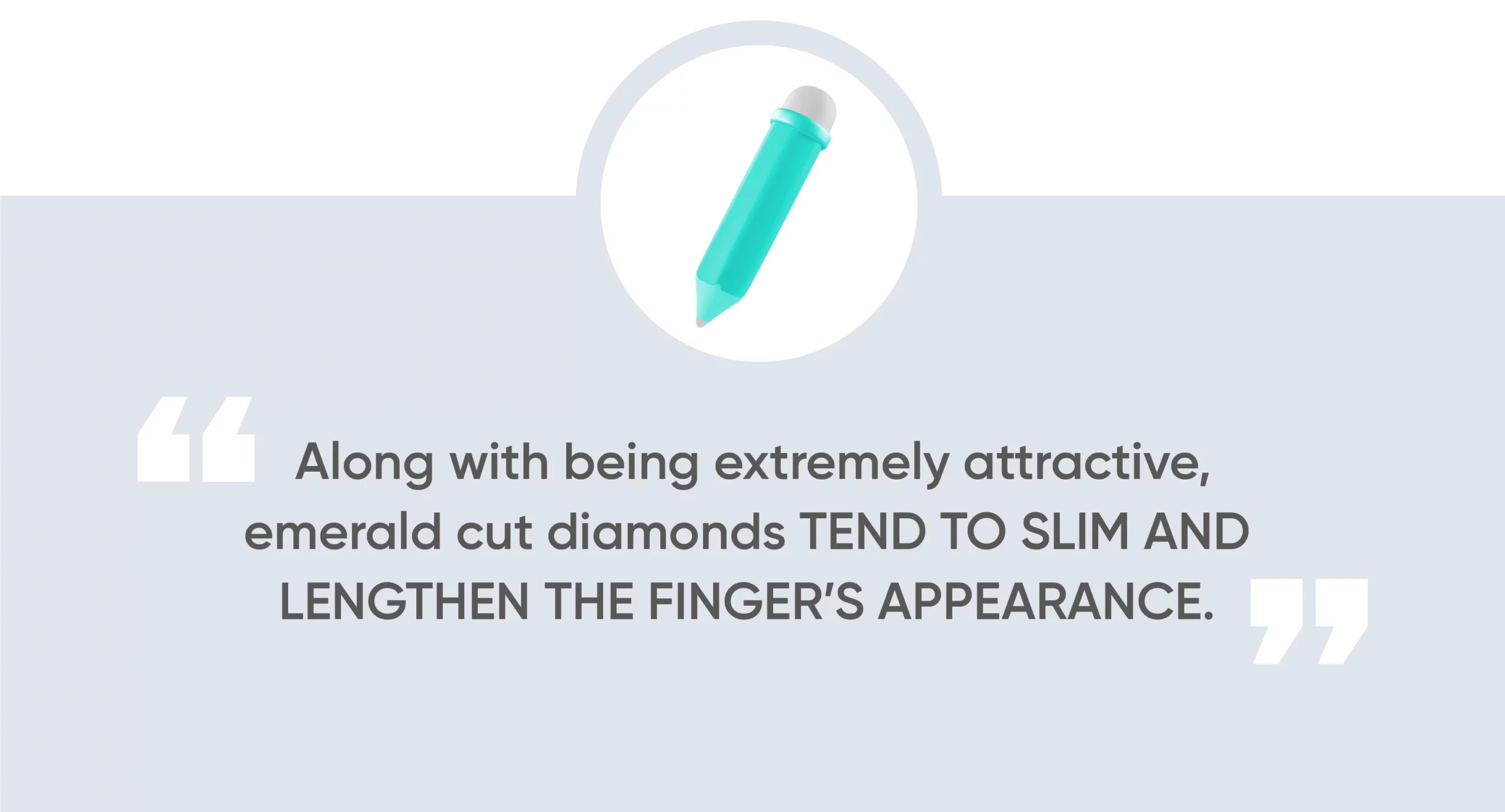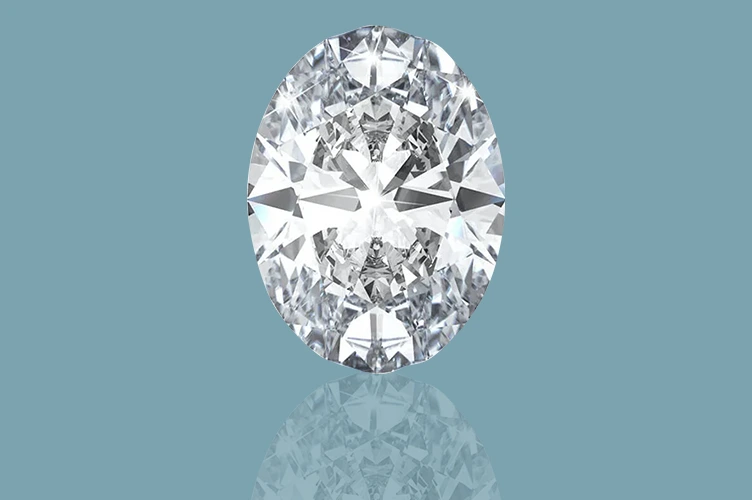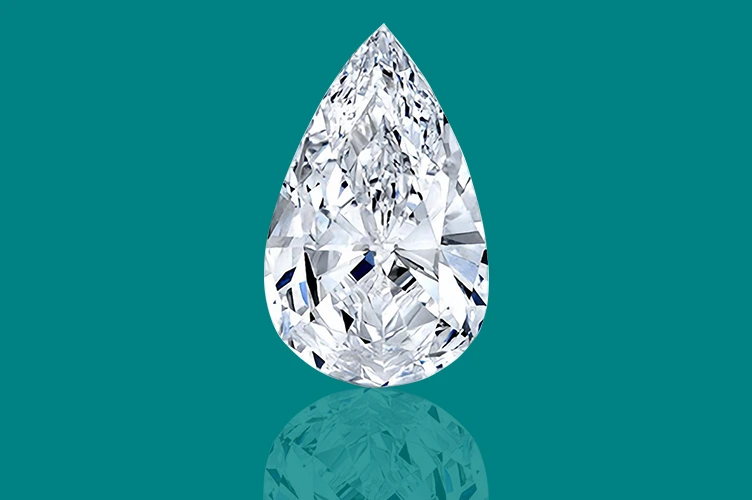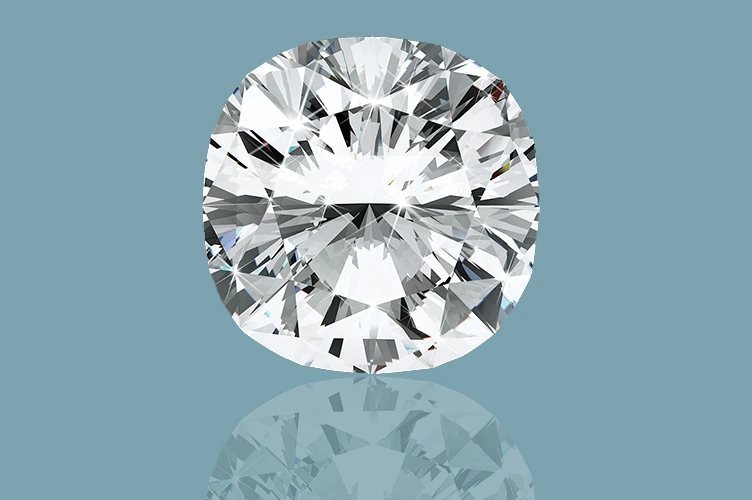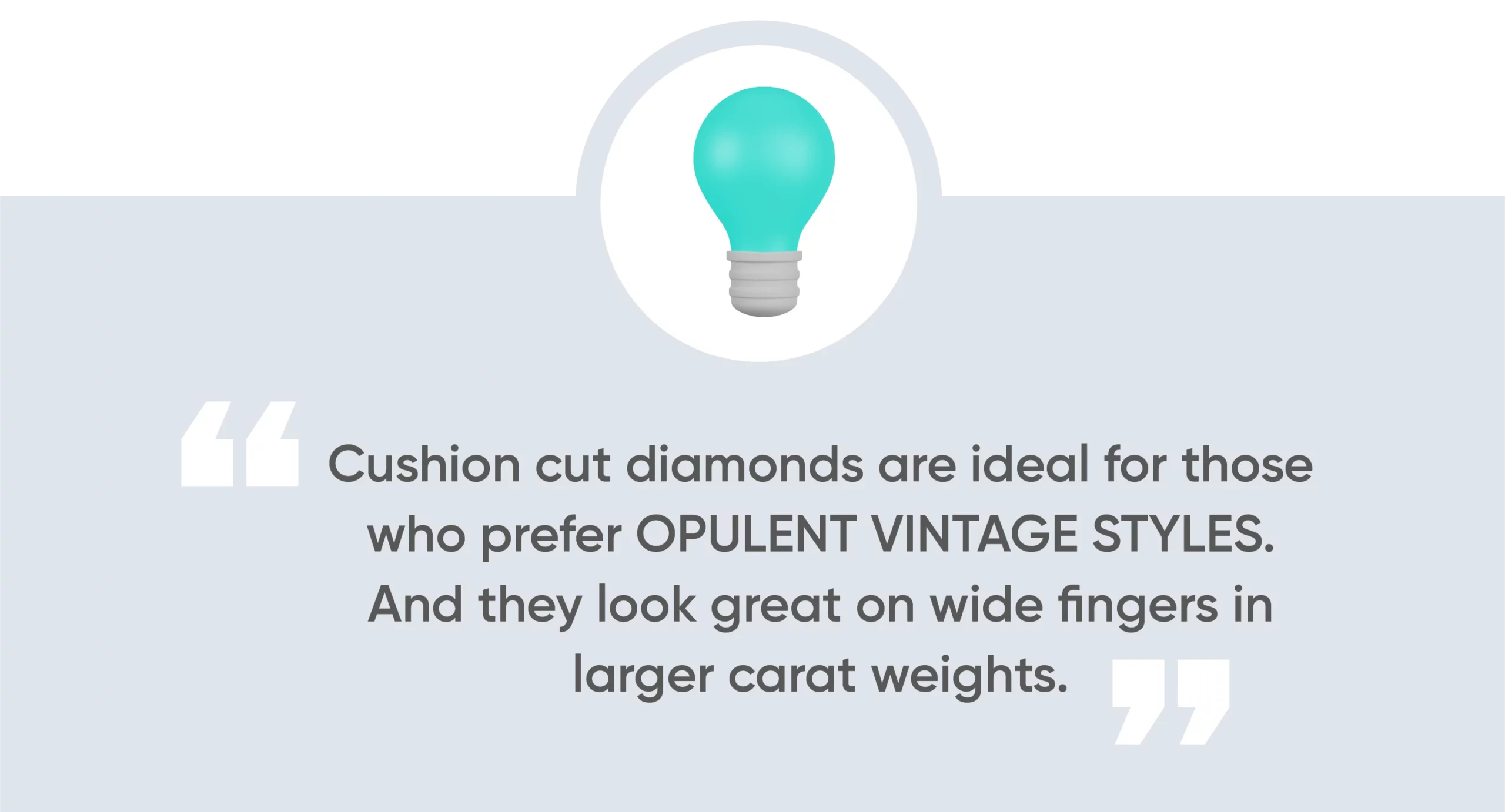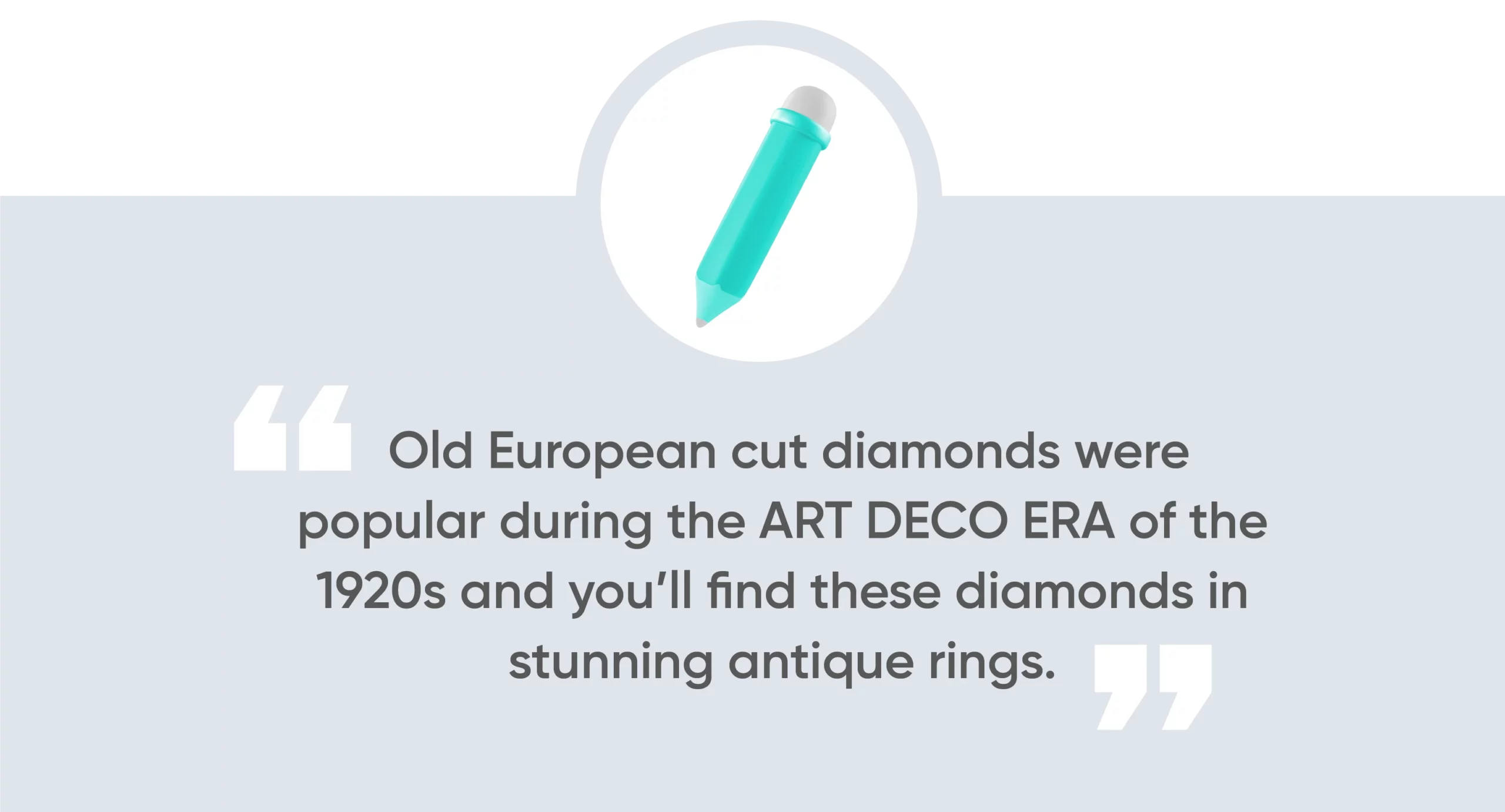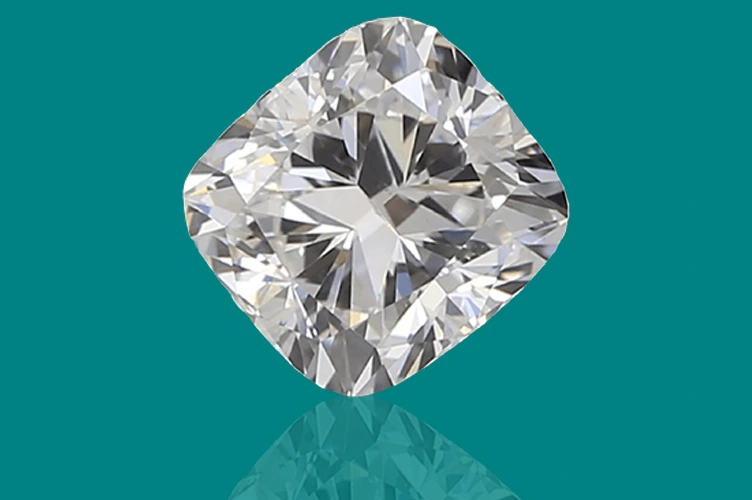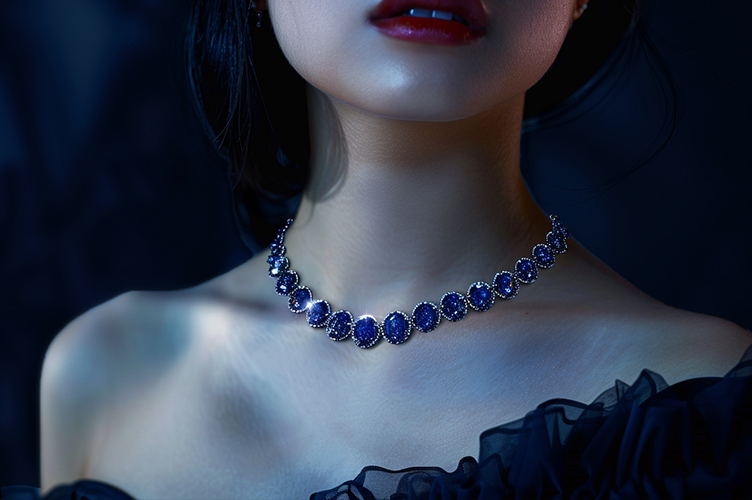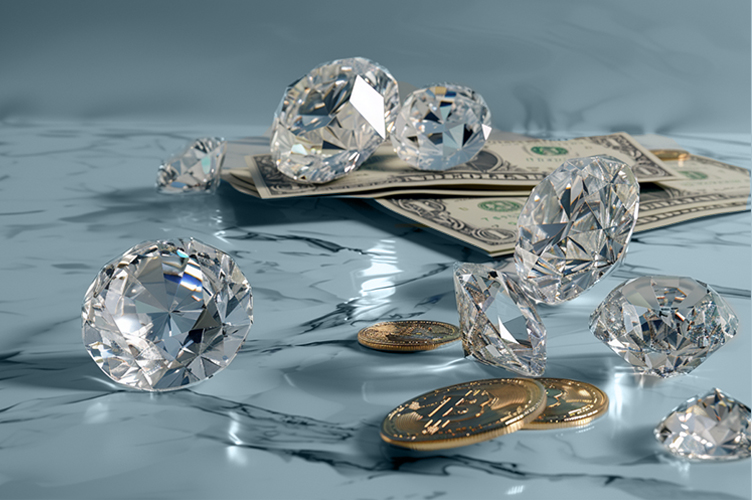There are dozens of types of diamond cuts out there, but which one is the best for your engagement ring? The cut of your diamond is important to consider because it affects both the shine of your diamond and the overall look of your ring. Here we’ll lay out the differences and the benefits of each cut, and help you decide which one is best for you.
What You Will Learn
- What does “diamond cut” mean?
- What about cut quality?
- What diamond cut should I look for
- 1. Round Brilliant cut diamonds
- 2. Princess cut diamonds
- 3. Emerald cut diamonds
- 4. Marquise cut diamonds
- 5. Oval diamonds
- 6. Pear diamonds
- 7. Cushion cut diamonds
- 8. Rose cut diamonds
- 9. Old European cut diamonds
- 10. Old mine cut diamonds
- 11. Asscher cut diamonds
- 12. Radiant cut diamonds
- Be sure to protect your diamond with Jewelry Insurance
*We are jewelry experts and enthusiasts that love to share our favorite brands, tips, and tricks with you. If you choose to make a purchase through one of the links, we may earn a commission at no additional cost to you.
What does “diamond cut” mean?
First, you should know that a diamond’s cut is different from its shape.
The cut refers to the flat surfaces or “facets” cut into the stone and how the light gets filtered and reflected throughout the diamond.
Diamond shape refers to the outline of a diamond and its overall shape AFTER it’s been cut.
For example, step cut diamonds have large, wide facets and a subtle, glowing-from-within shine. Brilliant cut diamonds have lots of small facets and have a brighter, more “fiery” shine. The majority of diamond shapes are brilliant cuts, with a few exceptions., while step cut diamonds come in only a few shapes.
What about cut quality?
Cut quality refers to how well your diamond interacts with light or “sparkles” in layman’s terms. Round brilliant cut diamonds are graded from poor to excellent. For a traditional engagement ring, look for at least ‘good’ cut grade as a rule of thumb.
What diamond cut should I look for
Start by getting to know some of the popular diamond cuts and shapes and see what appeals to you. Do you like the sharp angles and bright sparkle of princess cut diamonds? Or do you like the more plush, glowing look of a cushion cut diamond? If diamond size is especially important, you should learn which cuts maximize the diamond’s surface area, such as the marquise cut. Certain cuts can lengthen the appearance of small hands and fingers too. Of course, every diamond is special and unique, and it’s ultimately up to your personal taste.
Ready to get started? Check out our favorite rings in a variety of cuts:
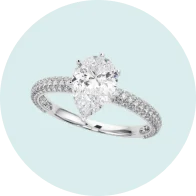
All diamonds all over this 14K white gold band with a beautiful pear center
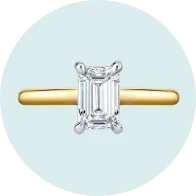
Add a little yellow gold for a simple but unique emerald style
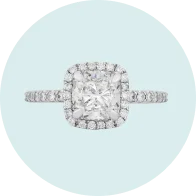
Sparkle all over with this elegant cushion cut ring

All over marquise cuts with this beautiful twisted band and center stone

A simple but loving look with a diamond band
1. Round Brilliant cut diamonds
This is the most sparkly of all diamond forms. The round diamond, which comes in a variety of sizes, is ideal for all hand sizes and shapes since it always appears proportionate and does not overshadow the finger. It’s also the most popular diamond cut. In fact, round-cut diamonds are featured in more than 75% of diamond engagement rings sold in stores.
Round-cut diamonds are featured in more than 75% of diamond engagement rings sold in stores.
The popularity of round brilliant cut diamonds leads to their slightly higher price compared to other diamond cuts. But popularity isn’t the only factor. When a natural diamond is mined, it is extracted as a rough stone, but the majority of it is lost when the diamond is cut into a faceted gem. In the case of round diamonds, a large portion of the rough stone must be removed in order to attain a round shape. As a result, round diamonds are generally more valuable.
2. Princess cut diamonds
The princess cut diamond was first introduced in the 1970s and has a square shape. Like the brilliant cut diamond, it has a high number of facets and therefore a lot of sparkle. It provides a more modern, minimalist take on the round cut. The square design has a way of concealing inclusions, so it’s a good cut for a less-than-perfect diamond. Its geometry appeals to individuals who enjoy contemporary jewelry, yet it looks nice on anyone’s hand.
Keep in mind that diamonds are the strongest substance on earth so the corners of a princess-cut stone are sharp. Ring settings with v-shaped prongs or bezel settings will safely protect the corners and ensure they don’t do any damage to your other jewelry or the ring itself.
Read Also: How To Measure Her Engagement Ring Size
3. Emerald cut diamonds
Rather than the typical glitter of brilliant cut diamonds, the rectangular emerald is a step-cut diamond so it flashes with sparkles of light. Step-cuts have rectangular facets which descend down the center of the diamond like steps. These larger facets create an endless ‘hall of mirrors’ effect when you look within the stone. The emerald cut is a classic that’s gained a lot of popularity in recent years. Apart from being extremely attractive, this diamond form tends to slim and lengthen the finger’s appearance.
4. Marquise cut diamonds
The marquise diamond has a refined vintage shape that stands out from the crowd. Its traditional setting is streamlined and elongates the finger, but it can also be set in an eye-like east/west position. The name marquise comes from King Louis XV of France who in the 18th Century created a uniquely shaped diamond that compared to the lips of his mistress.
One of the advantages of marquise cut diamonds is their wide surface area which can make them appear larger than their carat weight would suggest. This is because they’re fashioned from flatter, rough crystals and have a more shallow underside or pavilion than other diamond cuts.
5. Oval diamonds
Oval diamonds are essentially elongated brilliant cut round diamonds, so they too have exceptional brilliance and fire. While less traditional than round diamonds, ovals are still flattering on hands of all sizes. Those seeking the glitter and traditional beauty of round diamonds but wanting something a bit unique can choose the oval shape. Like the marquise cut, oval diamonds also give the impression of being larger than their actual size due to their extended surface area.
6. Pear diamonds
The pear-shaped diamond, which resembles a teardrop, was designed to display maximum brilliance and fire. That’s because, like ovals, they’re also a modified brilliant cut so they’re full of tiny facets that reflect the light and create sparkle. Designed to resemble a teardrop, these diamonds have a long history and were first created around 1475 in the Middle Ages. They’re popular with anyone who appreciates a classic, vintage look. This shape is also a great choice for anyone with shorter, wider fingers since it tends to elongate the hand’s appearance.
Suggested Read: Is a pear cut diamond best for my engagement ring?
7. Cushion cut diamonds
Prior to the introduction of the round cut in the early twentieth century, the cushion cut was the most popular diamond design. They have a square shape with rounded corners and significant shine and fire. The cushion cut combines a vintage feel with modern brilliance. This style is ideal for those who prefer opulent vintage styles. It looks great on wide fingers in larger carat weights.
Unlike oval and marquise cut diamonds, the cushion cut stone has a deep pavilion underneath it. This can make them appear smaller than other diamond cuts or shapes of the same size.
Suggested Read: How to Choose the Perfect Engagement Ring Style for Your Partner
8. Rose cut diamonds
Here is another cut that gives you more diamond for your dollar. Rose cut diamonds have a small base and a sprawling surface area, making them appear larger. Inspired by the blooming petals of a fully opened rose, they are covered in wide triangular facets. This cut first became popular in the 1700s so you’ll find plenty of antique jewelry with rose cut diamonds. These stones have more of a soft, lustrous glow rather than a fiery brilliance. You can also find rose cut diamonds in just about any shape you could think of so the possibilities for custom rings are endless.
Suggested Read: Are Rose Cut Diamonds Good for an Engagement Ring?
9. Old European cut diamonds
If you’re shopping for old mine cut diamonds, you’re likely to come across old European cut diamonds as well. Another round stone, to the untrained eye this cut looks very similar to the old mine cut. Elongated facets and a wider top make them a bit more like today’s round brilliant cut diamonds, but they were still cut by hand. Old European cut diamonds were popular during the Art Deco era of the 1920s and you’ll find these diamonds in stunning antique rings.
Since the old mine and old European cuts were invented before modern machinery, they may get a lower cut quality grade, but that shouldn’t stop you from choosing one. There’s nothing more special than a one-of-a-kind diamond that was cut by hand long ago.
10. Old mine cut diamonds
If a vintage look is what you’re going for, you’ll want to keep an eye out for old mine cut diamonds. This cut-by-hand technique dates back to the 1700s. These stones are round but more narrow on top than today’s round diamonds. They also have fewer facets because they were designed to sparkle under candlelight, not the bright electric lights of today. This gives them a really unique glow and a vintage feel that’s impossible to replicate.
11. Asscher cut diamonds
The Asscher is another popular cut from the 1920s and like the emerald cut, it’s considered a step-cut. Geometric facets descend down the center of the stone with an endless reflection. Its square shape has cropped corners making it less sharp and angular than the princess cut. Like other step-cut diamonds, it gives off bright flashes of sparkle when the light hits it.
12. Radiant cut diamonds
Uniquely modern, radiant cut diamonds have only been around since the late 1970s. They combine the best features of many favorite diamond cuts. With an emerald-like shape but with brilliant-cut facets, they’re incredibly sparky and fiery. Beveled corners make for a softer look and their wide diagonal length works to make them appear larger than their carat weight. If you like the sparkle of a brilliant cut but don’t want a round diamond, the radiant cut is for you.
Read Also: The 4Cs To Diamond Ring
As noted here, all cuts are unique and attractive in their own way, and your final decision is based on personal preference. With so many cuts to choose from, it can be a little overwhelming. But your perfect diamond is out there and waiting just for you. If you are unsure, we would always recommend a traditional round-cut diamond ring with a minimum cut quality of ‘good.’ Because of its exceptional brilliance and adaptability, the round diamond is the most popular diamond form ever and will always be well-received.
Be sure to protect your diamond with Jewelry Insurance
BriteCo offers affordable jewelry insurance that will give you comprehensive coverage and peace of mind. Our policies can be purchased within minutes online, and claims can be easily submitted on our website.
Our policy offers worldwide coverage for loss, theft, damage, and mysterious disappearance. We also offer safe storage discounts and monthly premium options and cover up to 125% of your item’s appraised value.
Contact us today to learn more about our coverage, or use our convenient online tool to get a quote for your insurance plan in minutes.
Also Check:
All You Need to Know About Choosing a Kite Cut Diamond for Your Engagement Ring
How Are Diamonds Cut? | BriteCo Jewelry Insurance
French Cut Diamond | BriteCo Jewelry Insurance
Is a Square Cut Diamond Right for My Engagement Ring?
What are Nature Inspired Engagement Rings?

